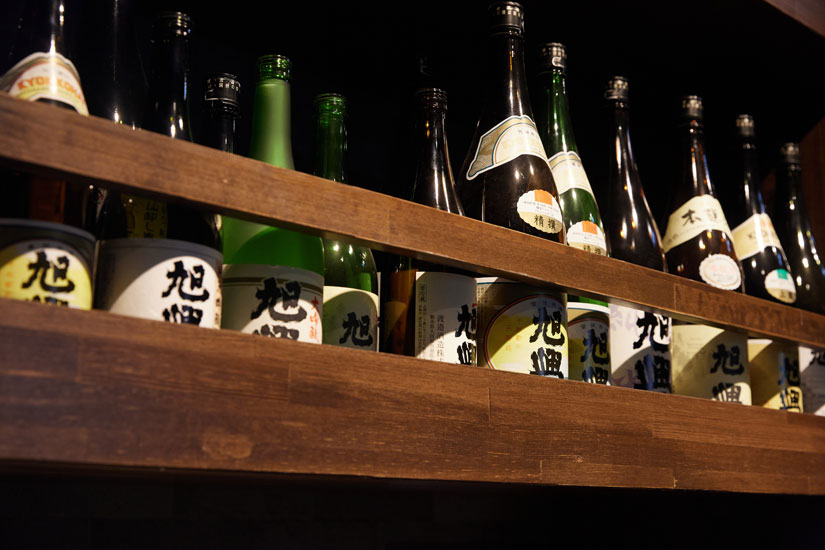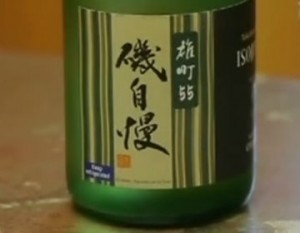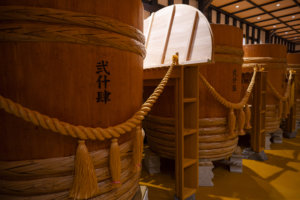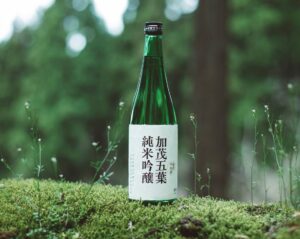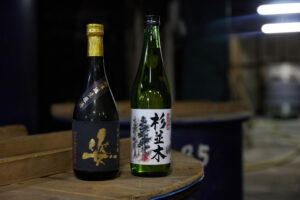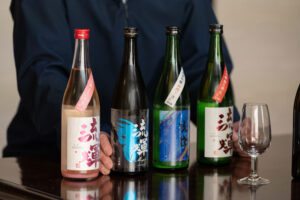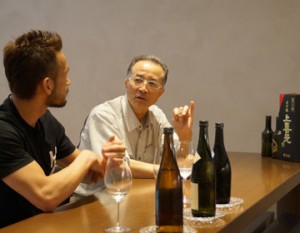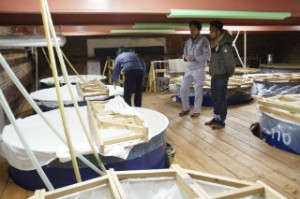Approximately 90% of the sake produced here is consumed locally or in northern Tochigi Prefecture, and even within Tochigi Prefecture, this sake, known as “Kyokuko,” is rarely seen in the southern part of the prefecture. It is carefully crafted using underground water from the Mumo River, which flows from the Yamizo Mountains, and high-quality rice from the local area, under the cool climate.
A historic sake brewery using the high-quality water flowing from Mount Yamizo.

Watanabe Shuzo is a sake brewery located in the mountainous village of Suzaki in Otawara City, Tochigi Prefecture, formerly part of Kuroha Town. Just a 10-minute drive away lies the border with Ibaraki Prefecture. Though a small brewery producing local sake, its history is long, dating back to 1892 (Meiji 25). The first generation, who was part of the Echigo Toji, a group of sake brewers originating from Niigata Prefecture, began making sake in a farmer’s barn. In 1912 (Meiji 45), the brewery moved to its current location, and since the new site was east of the previous one, they named the brand “Kyokuko” (meaning “rising sun”), hoping for good fortune.
A rare sake that is hard to find even in Tochigi Prefecture
“Sake loved by the local community is ‘local sake.’ It is not just sake made in a particular region,” is the company motto. The fifth-generation master brewer, Hidenori Watanabe, leads the sake brewing process.
The philosophy of “a sake rooted in the community and loved by locals” is reflected in Watanabe Shuzo’s distribution. While the company currently produces up to 900 koku, 90% of it is sold locally, with most of it within a 30-minute drive. Since one koku is equivalent to approximately 100 one-liter bottles, this means that 81,000 one-liter bottles are sold within a 30-minute radius.
Highly regarded nationwide, it represents the local area of Otawara.
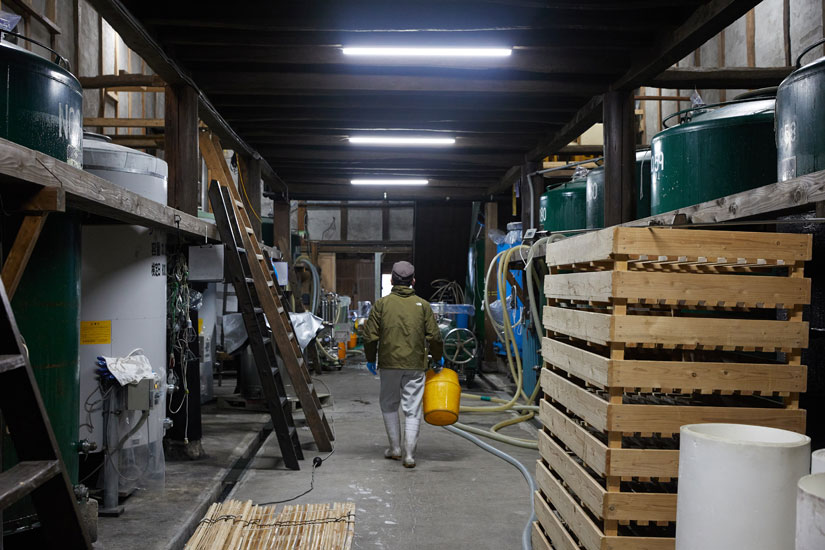
This small sake brewery is located in a region famous for its Yagami cedar trees. Recently, it has achieved remarkable results at the 103rd Southern Toji Self-Brewed Sake Appraisal Competition, where 312 ginjo sakes and 325 junmai sakes were submitted by 140 breweries nationwide. The brewery won first place in the ginjo sake category and second place in the junmai sake category. In fact, it also won first place in the ginjo sake category at the 100th competition, making it a well-known sake among connoisseurs.
Among the award-winning sake at the 103rd Nanbu Toji Jizake Sake Appraisal Competition, the ginjo sake was made using 100% Yamada Nishiki rice from Sakuyama in Otawara. “We made this sake to help promote Otawara,” said the brewer. The fact that the region, known for its rice production, is also highly regarded for the quality of its sake rice is truly remarkable.” Otawara is the leading rice-producing area in Tochigi Prefecture. This sake truly embodies the essence of Otawara and is a representative sake of the region.
Sake crafted to meet customer needs
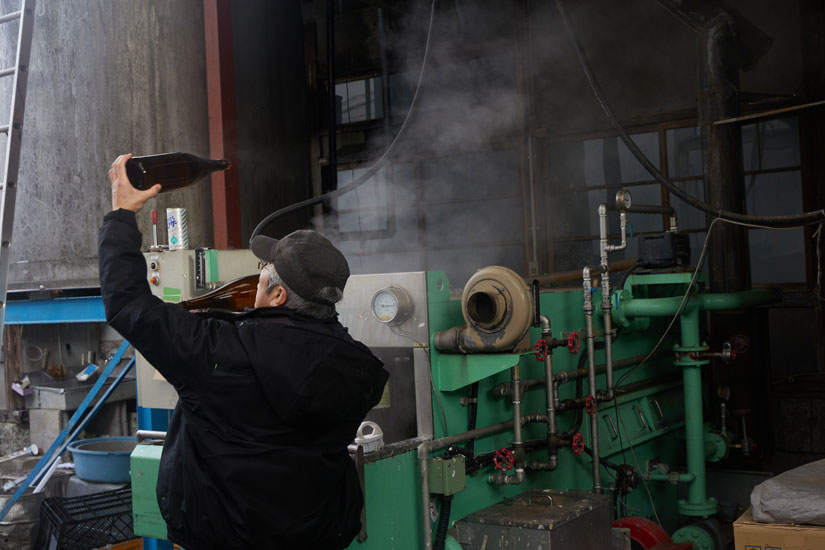
When asked what his main product is, Mr. Watanabe replies, “Nowadays, it’s pure rice sake.” He considers the ease of sale for retailers and restaurants and strives to create products that reflect the seasons. He also creates products from the perspective of the drinker, such as “This should be served unpasteurized.” As a result, numerous brands under the “Asahiko” label are distributed and loved by local people.
I love research. I want to continue researching and trying new things.
Mr. Watanabe graduated from the Department of Brewing, Faculty of Agriculture, Tokyo University of Agriculture. At university, he researched “yeast bubbles.” He still has a strong desire to continue his research and even has yeast research equipment in his brewery. It is rare for a sake brewery in a rural area to have its own research laboratory, and his passion for sake research is evident in his kijo-shu (sake made with yeast and rice wine).
Popular kijo-shu developed through research
While attending Tokyo University of Agriculture, Watanabe told his professor that he wanted to study kijo-shu, but was told that it was outdated. Kijo-shu is a type of sake made by using sake instead of water, resulting in a unique, sweet, and viscous texture.
Unable to give up on his research, Watanabe returned to his own brewery and reached out to a popular kijo-shu brewery to seek guidance. Furthermore, he believed that simply replicating what he had been taught would make him a copycat, so he decided to challenge himself by creating a fresh take on kijo-shu.
Drawing on his passion for research, he meticulously selected the rice used for kijo-shu and discovered that a variety with low gluten content (glutenin) resulted in a “sweet yet crisp, casual flavor.”
The sake “Kijōshu Hyaku” born through this process is now a popular product of Watanabe Shuzo. When something catches his interest or an idea comes to mind, he doesn’t hesitate to try it. His relentless pursuit of taste and quality is the strength of Watanabe Shuzo.
If something interests you, give it a try.

Watanabe’s challenge is not limited to “Asahi Ko Kijōshu Hyaku,” which was born out of his passion for researching Kijōshu.
“I want to use local water and rice, and I want to use local containers to brew the sake. I also want people to know about products made with Yagami cedar, which is also a local product.” This sentiment led to the creation of another product. The sake is brewed in barrels made from cedar from the mountains behind the Yagami region, which is also a cedar-producing area.
Watanabe’s research into sake knows no bounds, as he continues to challenge himself every year with questions like, ”If that can be done, what about this?”



